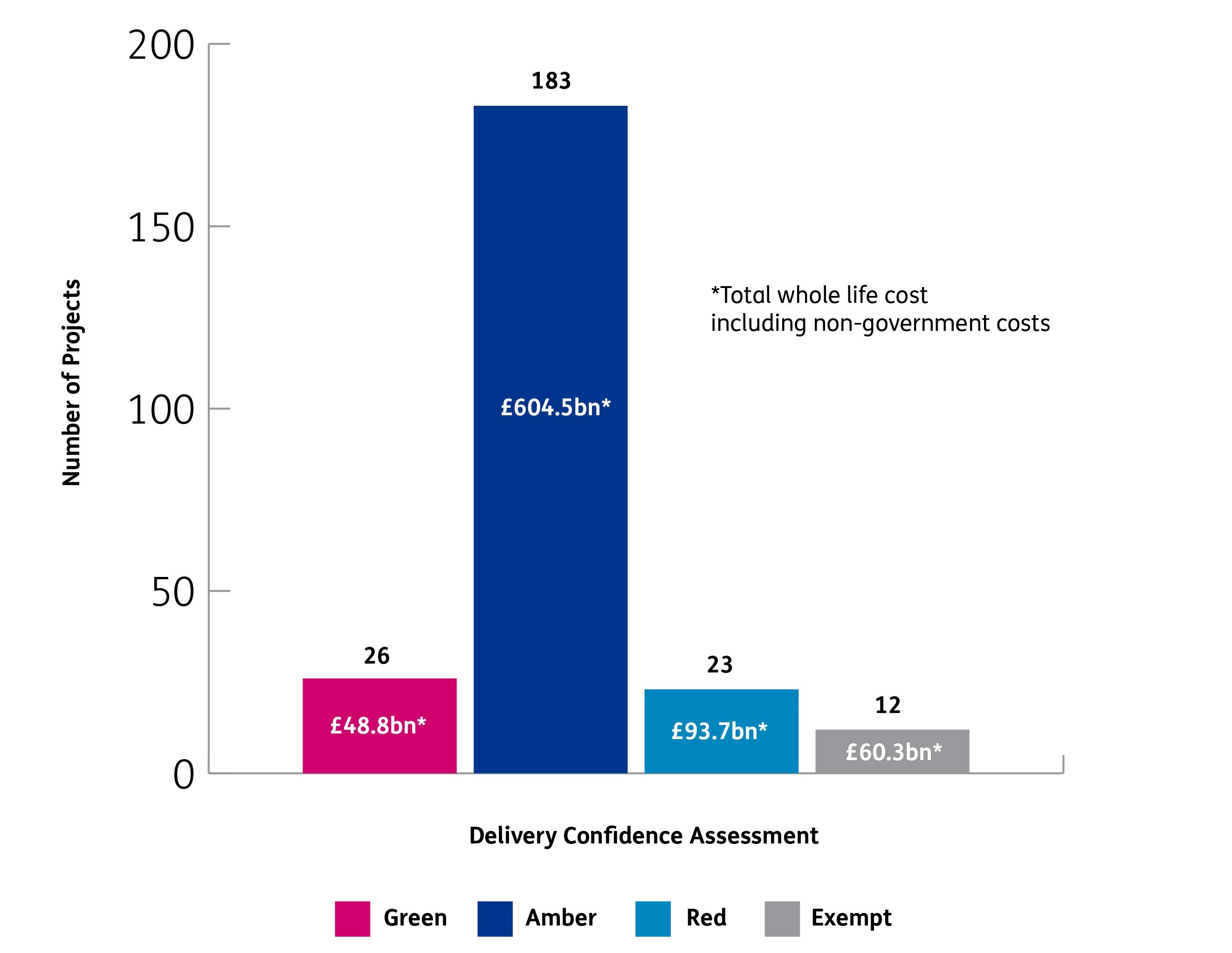There is an ongoing challenge, heightened by the economic climate, for the public sector to do more with less. Understandably, this results in increased scrutiny of government projects and whether they are delivering value for money and achieving stated outcomes. The upcoming 2024 Spending Review and general election will ramp up this pressure. It’s imperative that government ensures investment is spent wisely.
Yet in its latest annual report on the Government Major Projects Portfolio (GMPP), the Infrastructure and Projects Authority (IPA) applied a ‘green’ delivery confidence assessment (DCA) against only 11% of projects. This represents confidence against only 6% of the £805bn total spend across the portfolio.

Given the scale and complexity of major government projects, successful delivery is key to providing value for money for the UK taxpayer. So, how can government better use data to improve delivery?
Be clear from the outset on the data points that will show project, programme or portfolio performance
Selecting the key KPIs is critical to ensuring delivery of stated outcomes. This means being clear upfront on what the measures of success are. KPIs should be directly tied to Departmental objectives or portfolio outcomes, regularly reported on, and embedded in governance. Data needs to be an ally to decision-making. As the recent Reform report stated, “... the information must be detailed, well presented, and laser-focused on the needs of decision-makers”.
The goal here is surfacing the KPIs that provide a comprehensive view of delivery, without overwhelming the audience in reams of data that risk obscuring delivery issues as they arise. Of course, data alone, void of insight, is also not the answer. But all too often, project delivery is underpinned by ‘gut feel’ updates rather than data-led insight. In-depth analysis and insight must drive actions to aid successful project delivery while giving project directors the ability to course correct en-route.
We know how effective this can be, having supported a government client with their portfolio prioritisation by focusing on two key metrics: carbon emissions savings and timelines for realisation. This laser focus on the data points that mattered most allowed us to reduce 150+ potential initiatives into a shortlist of 80 priorities based on an appraisal of project categorisation, lifetime costs, outcomes, and delivery complexity. Once agreed, we applied analytics tools and an interactive dashboard to monitor delivery against the most critical outcomes.
Measure delivery progress consistently across all stakeholders to ensure alignment
Thanks to a big push around ‘Big Data’ in government in recent years, including the 2020 National Data Strategy, there is a wealth of data available across the project delivery landscape. That said, there’s a real risk of inconsistent measurement, tracking and reporting among stakeholders, particularly when projects transcend departmental boundaries. This results in misaligned expectations around delivery progress across projects. Once KPIs are set and agreed upon, every stakeholder must measure and report against these using consistent data standards and principles. This will ensure that all project stakeholders can rely on a ‘single source of truth’ to provide a clear view of delivery.
We know this works because government has done it before. Responding to the urgent need for action during the Covid-19 pandemic, Baringa supported government clients to create an interactive data solution that empowered civil servants, ministers, emergency services, and clinicians to make informed decisions.
With the vast array of data available at the time, our team worked with government advisors to align all stakeholders on the critical metrics for ongoing analysis, ensuring that data was captured and reported consistently. This helped us to drill down into the data to compare our projections to reality. With these insights, we armed ministers with the information they needed to make quick decisions to deliver against objectives.
Proactively monitor the benefits and outcomes to determine project success
Across government, benefits data is too often overlooked. Yet, this is pivotal to unlocking the value of major projects. While considerable time and effort is spent defining the benefits case up front, delivering on this is often neglected during, and perhaps more importantly, following the project.
Targeted training and investment in data capability would help to promote the use of predictive metrics, diagnostics, and data tools. Improving project teams’ data modelling and analytics skillset would enable them to better define, estimate and assure benefits realisation on an ongoing basis. It will also help project leadership to understand the impact on benefits from policy changes and other external factors in order to make the necessary trade-off decisions to deliver projects on time and budget while maximising benefits. There needs to be a shift from assuming success based on delivery of the project itself to assessing the ongoing benefits and outcomes of the project.
The bottom line
While government is aware of many of the points above, action is needed. NAO reports dating from 2016 have highlighted these issues, but lessons are still not being learnt. Solely addressing the known data skills gap or investing in AI tooling won’t tackle current project failures.
First, government must focus on fundamentals, which means investing time and effort at project or portfolio inception to truly understand the outcomes and benefits case, and then applying clear metrics to measure, monitor and track against these across stakeholders.
Only by ensuring that delivery is underpinned by relevant and accurate KPIs will government be able to improve the DCA picture highlighted above. Robust governance and consistent tracking during projects will then provide the real-time insight required to deliver them successfully or make decisions to pursue alternative action.
With these foundations established, alongside the current focus on addressing the data skills gap (as evidenced by the ‘One Big Thing’ Initiative), government will then see tangible improvements in delivery confidence. This will also enable project teams to exploit the full value of emerging predictive tooling, allowing for better scenario planning and timely responses to changing policy positions in a way that’s simply not possible until the fundamentals are in place.
In this video Rhiannon Evans, expert in technology-enabled transformation, and Tom Woodhouse, expert in programme delivery and portfolio prioritisation, share three ways you can use data to improve delivery.
Read our transcript below the video.
Making data an ally to project delivery decision making
Get in touch
To find out how Baringa could help your organisation unlock its potential and put data and analytics at the heart of project delivery excellence, please get in touch with Rhiannon Evans or Tom Woodhouse,
This article can also be found on Civil Service World.
Subscribe
Sign-up for the latest government and public sector insights by completing the below form.
Related Case Studies

Building the UK’s critical Covid-19 Test & Trace infrastructure
How do we drive procurement success during the biggest global health crisis of the last century?
Read more
Bringing best practice to a major government department
We created measurable programme progress and raised the departments' credibility to deliver with ministers.
Read more
Shaping a government department’s net zero portfolio delivery approach
Achieving net zero emissions is one of the most pivotal and complex economy-wide transformations in UK government history. How do we measure progress and prioritise initiatives to make the biggest impact?
Read more
We designed the NHS Covid vaccine supply chain, putting patients at its centre
With Covid numbers rising, and first vaccines coming to market, the NHS needed an agile and resilient vaccine supply chain to deliver millions of jabs to the country.
Read more